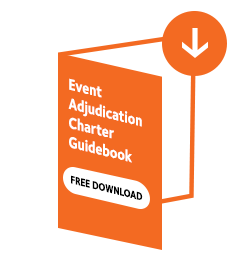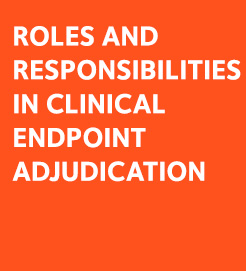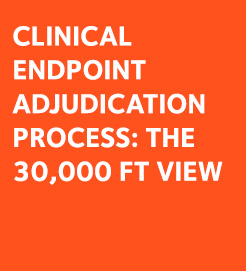Clinical Endpoint Adjudication is performed by a group of recognized experts who review and assess complex endpoints, most of the time at the request of health authorities. While larger sponsor companies with market presence and recognition are usually able to recruit and manage such expert groups, this is not always an easy task for smaller companies. Academic Research Organizations can provide an elegant answer offering “turnkey” solutions with the recognition stamp of prestigious universities.
Recruiting, training and managing an Endpoint Adjudication Committee (EAC) is a complex and time-consuming task. Experts are busy people and they are often working for years with the larger companies as advisors, principal investigators and prescribers. Convincing them to work for a smaller sponsor is not always an easy job regardless of financial considerations and even of the scientific interest.
This is only the first of a series of difficulties. Defining the adjudication rules, writing the adjudication charter and testing the accuracy of these can prove to be complex. Training and management of the EAC consumes resources that are sometimes beyond the reach of smaller companies. If the study is complex enough to warrant the use of an electronic platform, the EAC must be trained and qualified to the use of that tool in addition to the protocol and the adjudication rules.
What if you could have access to a group of experts working under the name of a world-renowned university, who know the pathology you are working on, have extensive experience of the endpoint adjudication process and already know how to use the electronic platform that you have chosen for your study? What if this group was available to help set the rules, write the charter and even advise on health authorities’ requirements? Would that be too good to be true?
Not at all. All these can be provided by an Academic Research Organization (ARO) and many prestigious universities have set up such groups. In addition to clinical expertise, an ARO can provide a range of services, including site monitoring, data management, statistical analysis, safety monitoring, and clinical events adjudication.
One of the first groups that applied the principles of an ARO for clinical endpoint adjudication was born in 1975 from a research team at Oxford University in the UK. It managed the then-largest trial in history, over 6,000 patients with suspected acute myocardial infarction (MI). Many more followed like the Thrombolysis In Myocardial Infarction (TIMI) study group, based in Boston, Massachusetts, and affiliated with Brigham and Women's Hospital and Harvard Medical School.
So, if you are considering clinical endpoint adjudication for your next trial, consider working with an electronic platform provider who collaborates with AROs. You could “kill two birds with one stone”.
DOWNLOAD NOW THE FREE ENDPOINT ADJUDICATION HANDBOOK
The Complete Manual / Reference Book (34 pages) with all the topics related to the Independent Endpoint Adjudication Committees Management








